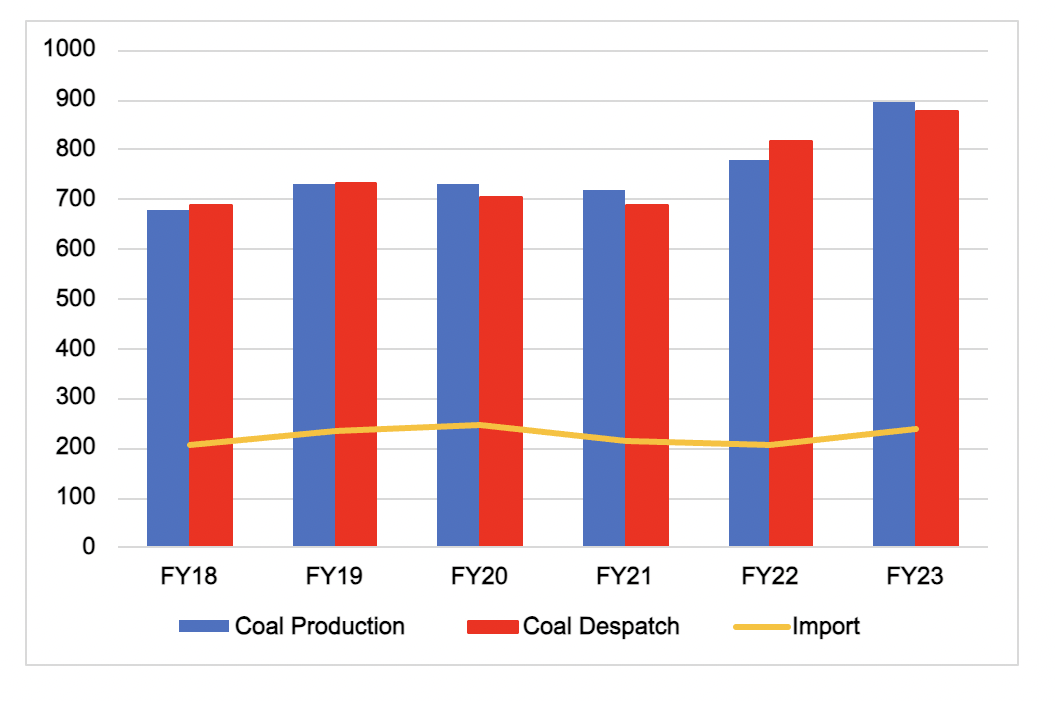Watts at Stake: India's Looming Power Shortage

India's power sector faces rising demand and power shortages, sparking fears of the most significant power shortfall in a decade. With coal imports continuing to rise and hydropower generation declining, India's aim to become a manufacturing hub could become challenging. Energy transition is likely to take a back seat, as the government pushes ahead its agenda of Make in India.
India, one of the world's fastest-growing emerging economies, is grappling with a surge in power demand amid a backdrop of power shortages and infrastructural challenges. As the nation's economy expands, so does its need for electricity, but recent data and reports underscore the complexities and vulnerabilities within its power sector.
In FY24 (April-March) India witnessed a staggering 7.7% yr/yr increase in coal imports, reaching 268.24 million tonnes. This surge, fuelled by softened seaborne prices and anticipation of heightened power demand during the summer season, reflects the nation's heavy reliance on thermal power generation. March alone saw a notable 11.8% yr/yr increase in coal imports, with both non-coking and coking coal experiencing significant rises. This comes on top of strong domestic supply of coal.
Figure 1: India Coal Production, Despatch and Imports (million tonnes)

Source: Continuum Economics, Coal Ministry of India
Despite having sufficient domestic coal reserves, expectations loom for a further uptick in coal demand in the upcoming quarter, driven by persisting heatwaves across the nation and an anticipated surge in peak demand from both industrial and household sectors. Local media reports warn of the potential for the most significant power shortage in a decade, exacerbated by a decline in hydropower generation and delays in commissioning new coal-fired plants. The Central Electricity Authority forecasts a peak shortage of 14 gigawatts in June, particularly during nighttime hours when solar capacity remains inactive. This deficit, the widest since 2009-10, underscores the urgent need for mitigation strategies. To address the crisis, the government has taken decisive action, including deferring power plant maintenance shutdowns and reactivating idle coal plant capacity.
However, India's power sector challenges extend beyond immediate shortages. The nation's commitment to transitioning towards green energy sources clashes with the current necessity for thermal power generation. Despite aspirations for net-zero emissions by 2070, plans for new coal power plants gained momentum recently, highlighting the delicate balance between short-term energy needs and long-term environmental goals.
Meanwhile, India's fuel demand paints a complex picture of economic activity intertwined with energy consumption. April saw a 6.1% yr/yr increase in fuel consumption, primarily driven by heightened activity preceding nationwide elections. Industry analysts anticipate a 3%-4% growth in fuel demand, largely propelled by GDP expansion and growth in the manufacturing sector. Concurrently, electricity demand from industry is also expected to rise steadily.
Policy-making for the incoming government will be critical in addressing the challenges facing India's power sector. Businesses and investment could be impacted by power shortages, particularly in the context of India's ambition to become a manufacturing hub. Reliable and affordable electricity alongside infrastructure is indispensable for industrial growth that India is envisioning and will be a key concern for the government. Looking ahead, India's GDP is projected to expand by 6.6% yr/yr in FY25, suggesting continued growth in fuel demand and electricity consumption. Should the Bhartiya Janta Party secure a third term in June, the focus on renewable energy (particularly solar) and overall power generation and infrastructure will form a large part of government outlay in the coming two financial years. As India navigates its energy transition, balancing short-term energy security with long-term sustainability will be essential to foster a conducive environment for economic growth and investment in the manufacturing sector.